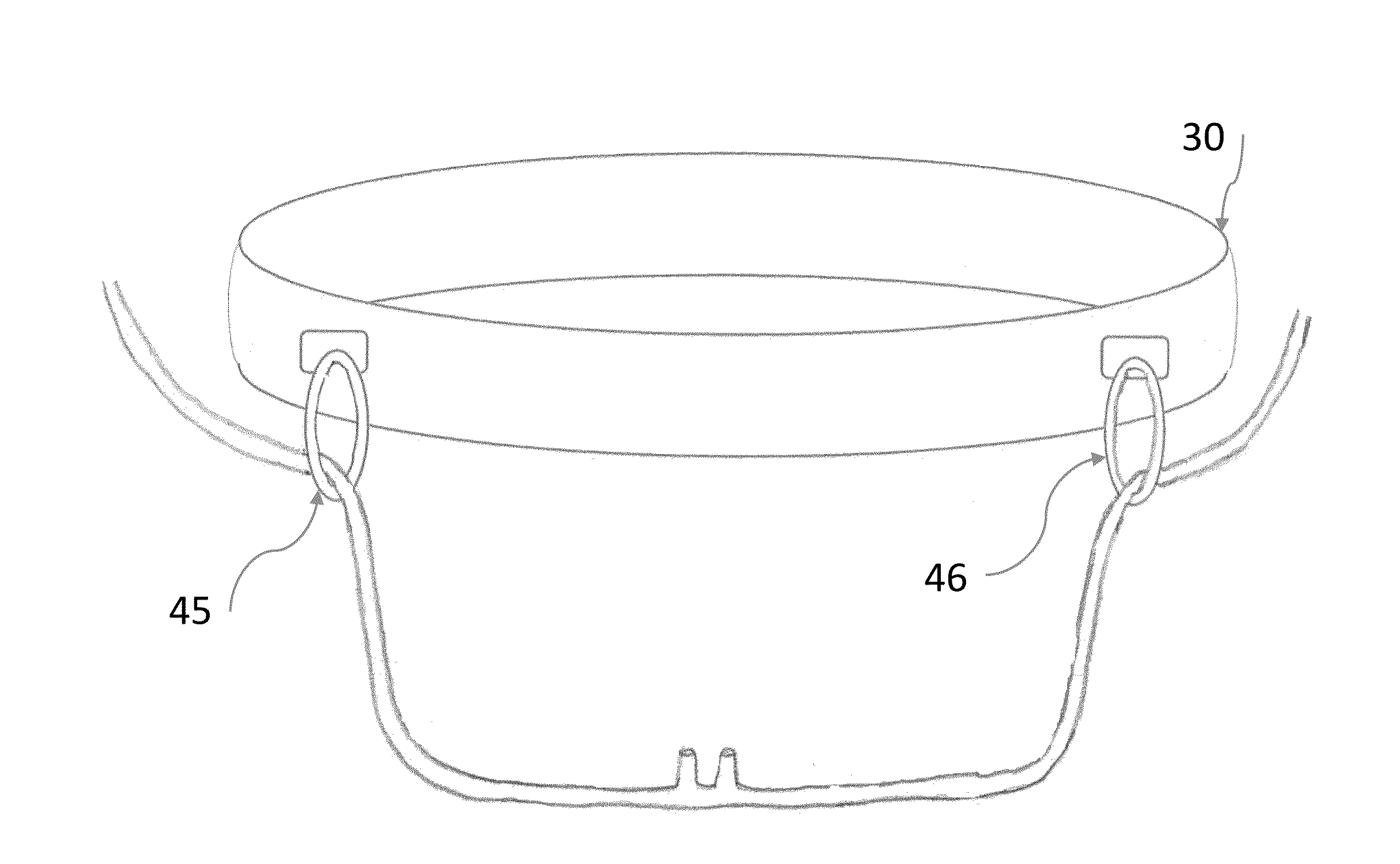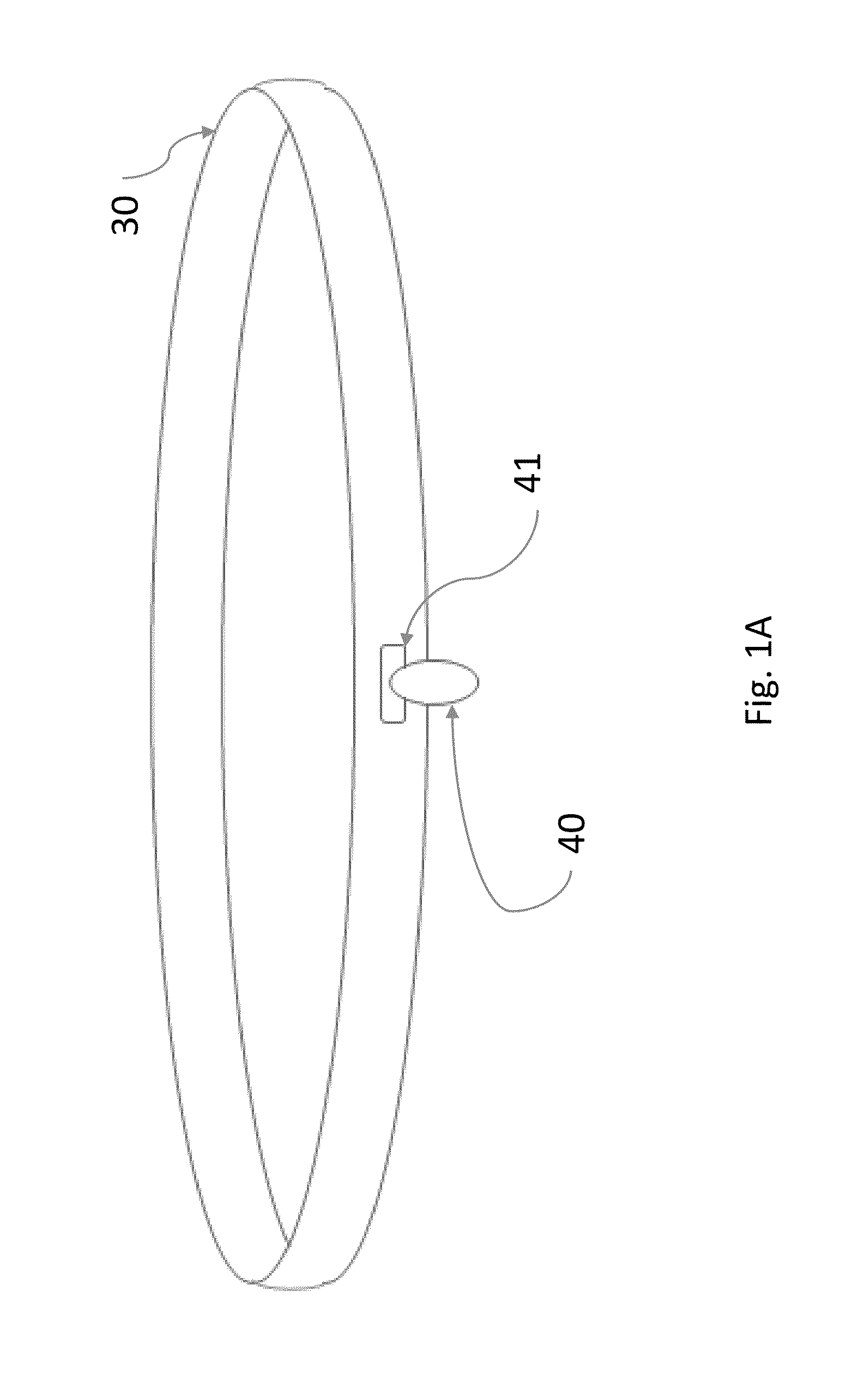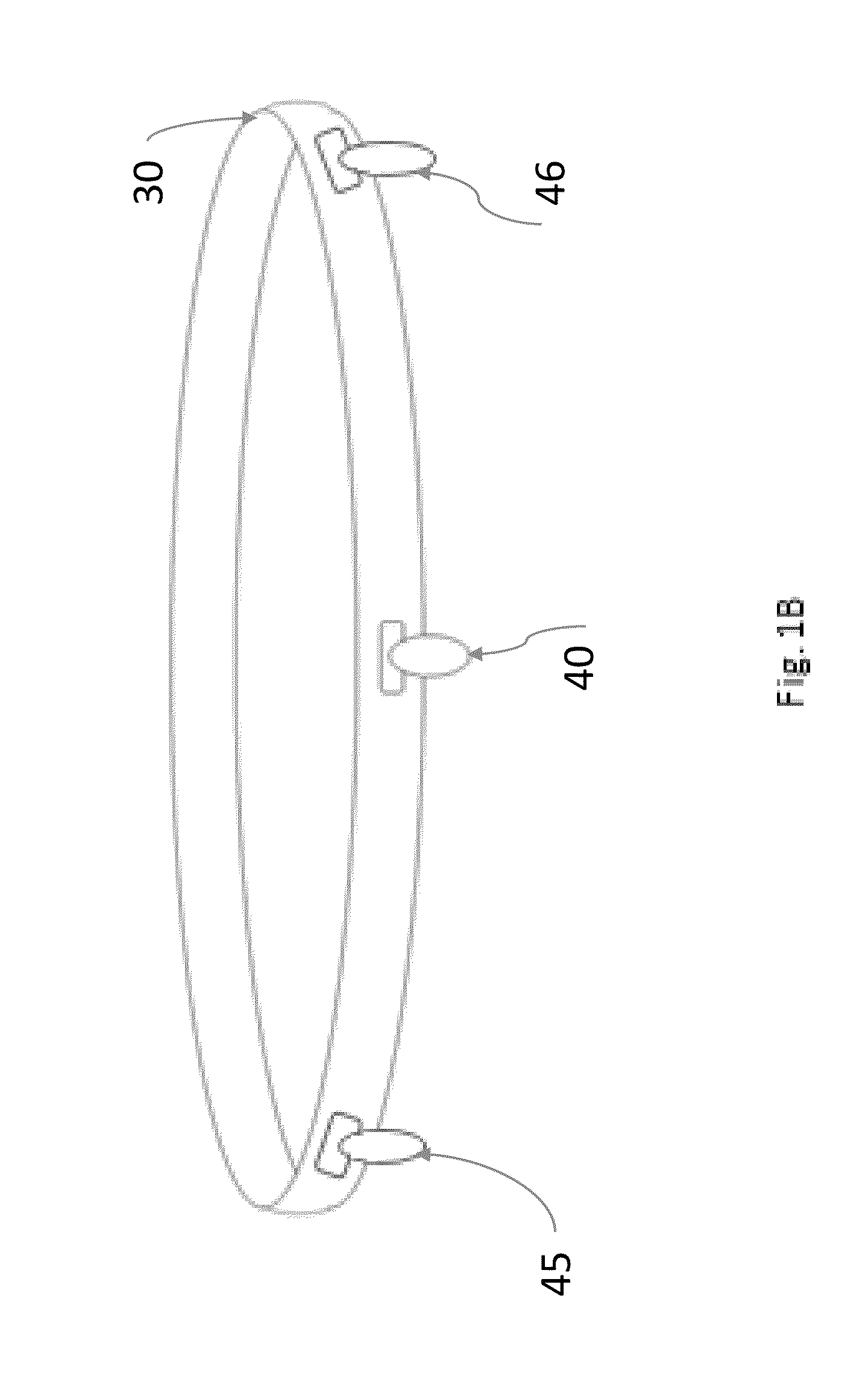Eyeglass and medical device retainer and sensor
- Summary
- Abstract
- Description
- Claims
- Application Information
AI Technical Summary
Benefits of technology
Problems solved by technology
Method used
Image
Examples
Embodiment Construction
[0019]The present invention is an eyeglass and medical device retainer comprising an adjustable head band, and at least one loop element that wraps around the eyeglasses or medical device being used by the wearer and thereby maintaining the eyeglasses or medical device in the desired position on the wearer's head.
[0020]In more particularity, as shown in FIG. 1A, the eyeglass retainer comprises a textile head band 30 with a loop 40. The textile head band 30 is designed to encircle the wearer's head above the wearer's ears and along the forehead area of the wearer. The loop 40 has two ends such that one end is affixed to the head band 30 and the other end is removably attachable to the head band 30. As shown in use, the wearer can use the loop 40 to encircle the center section of the eyeglasses or sun glasses, and then put the head band 30 on along with the eyeglasses or sun glasses. With the user wearing the head band, his or her glasses will be held in position, and will not slide d...
PUM
 Login to View More
Login to View More Abstract
Description
Claims
Application Information
 Login to View More
Login to View More - R&D
- Intellectual Property
- Life Sciences
- Materials
- Tech Scout
- Unparalleled Data Quality
- Higher Quality Content
- 60% Fewer Hallucinations
Browse by: Latest US Patents, China's latest patents, Technical Efficacy Thesaurus, Application Domain, Technology Topic, Popular Technical Reports.
© 2025 PatSnap. All rights reserved.Legal|Privacy policy|Modern Slavery Act Transparency Statement|Sitemap|About US| Contact US: help@patsnap.com



